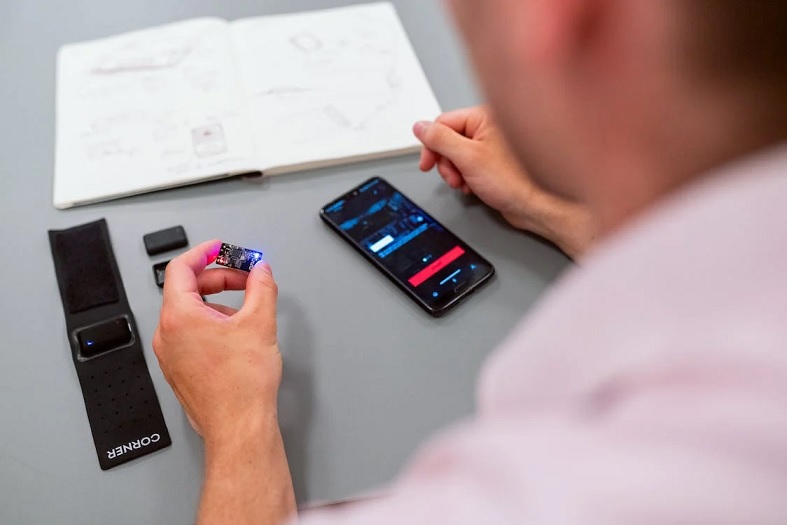Introduction
Embarking on the quest for a high fidelity prototype, we enter a realm where sophistication intertwines with functionality. This advanced prototype stands as a mirror image of the envisioned product or system, mirroring its design, user interface, and functionality. Deployed during the development phase, it allows us to gauge the usability and effectiveness of our creation prior to its grand unveiling. By employing software-based tools like Adobe Photoshop, Sketch, or Figma, we traverse the realm of rapid prototyping, testing the waters of innovation at an accelerated pace. The significance of high fidelity prototype lies not only in their ability to validate design decisions early on but also in the precious time and resources they save in the long run.
Defining the Unraveled Essence of High Fidelity Prototypes
A tapestry woven within the domain of software development, high fidelity prototyping unravels as a technique that breathes life into the embryonic stages of an application or product. It births a working model that mirrors the essence of the final creation, allowing developers to delve into the realms of usability and performance evaluation before fully committing resources to a large-scale production version.
Crafted with specialized software, these prototypes masterfully mimic the features and functions that will define the final product. Graphical user interfaces come alive with buttons, menus, sliders, text boxes, images, and an intricate tapestry of elements that harmonize to project the product’s completed form.
The true beauty of high fidelity prototyping lies in its ability to shed light on imperfections, unveiling them at an early stage and preventing potential pitfalls. Developers gain the power to make informed adjustments, saving themselves from the daunting task of starting from scratch with a whole new design concept. By exploring diverse concepts through high fidelity prototypes, they mitigate risks that stem from ill-fated design choices, ensuring their projects shine upon release.

Venturing into the Bounty of High Fidelity Prototypes
Delving into the treasure trove of high fidelity prototypes, we uncover a plethora of benefits waiting to be unveiled. Let us embark on this expedition, embracing the fruits of perplexity and the bursts of engagement they bring.
- Improved User Experience: A high fidelity prototype manifests as a gateway to an immersive user experience. As designers craft a realistic, functional version of their creation, they ensure it resonates with the users’ deepest needs. By exploring intricate interactions and swiftly iterating on designs, designers unveil potential usability issues early in the process, allowing for their timely resolution before the grand unveiling.
- A Swift Dance in the Development Cycle: High-fidelity prototypes empower designers to delve into intricate visuals and interactions that transcend traditional wireframes. This dance between precision and detail facilitates seamless communication between designers and developers, expediting the development cycle. By eliminating the back-and-forth struggles of interpretation, these prototypes breathe life into code, transmuting it into a tangible manifestation of the envisioned product.
- Igniting the Flames of Engagement: Casting aside the shackles of abstraction, high fidelity prototypes give potential users a tangible treasure to explore. The interactive nature of these prototypes ignites the flames of engagement during user testing sessions, breathing life into the creation and allowing it to leave an indelible mark on those who encounter it.
Unraveling the Tapestry of Challenges: Taming Complexity’s Wild Beast
As we venture deeper into the realm of high fidelity prototypes, we must acknowledge the wild beast of complexity and the challenges it brings. Let us confront these challenges head-on, armed with knowledge and resilience.
One such challenge lies in striking the delicate balance between cost and functionality. High fidelity prototypes, with their unparalleled detail and fidelity, demand more resources in terms of time, money, and expertise. Organizations find themselves at a crossroads, pondering the allocation of resources in alignment with their prototype’s aspirations. Navigating the treacherous waters of cost reduction while preserving functionality becomes a demanding yet essential task in the pursuit of successful development.
Another challenge we face involves ensuring seamless integration of all the moving parts. The intricate nature of high fidelity prototypes leaves room for small, yet potentially catastrophic errors. Be it a faulty wire or a minuscule software coding mishap, the integration into larger systems or products can become a veritable minefield. Delayed timelines and potential failures loom ominously unless proper testing and quality assurance measures are firmly put in place.
Illuminating the Path to Success: Nurturing the Prototype’s Growth
Building a successful high fidelity prototype demands an intricate dance of skill and finesse. Nurturing its growth requires careful attention to detail and adherence to best practices. Let us shed light upon this path, illuminating the way to triumph.
- A Humble Beginning: The journey towards a high fidelity prototype commences with humble origins. Begin by crafting low-fidelity prototypes, allowing for swift concept testing without the weight of intricate design. Tools like Balsamiq or Invision App serve as steadfast companions on this initial leg of the journey, freeing you from the shackles of coding and complex design elements.
- Immersion in User Realms: As your high fidelity prototype takes shape, immerse yourself in the realms of user needs. In-depth research becomes your guiding light, illuminating the desires and goals of your target users. Dive into conversations with potential customers, meticulously study user analytics data, and forge an intimate understanding of how people interact with your creation. Let this wisdom shape the interface decisions you make, ensuring your prototype resonates deeply with its intended audience.
Conclusion
In this grand symphony of fidelity and creativity, high fidelity prototypes emerge as the protagonists, paving the way for exceptional user experiences. These meticulous creations provide a window into the future, enabling designers to test, evaluate, and refine their designs before they spread their wings and take flight. By embracing the power of perplexity and harnessing the bursts of engagement, we embark on a transformative journey towards the realization of remarkable products that surpass customer expectations.
